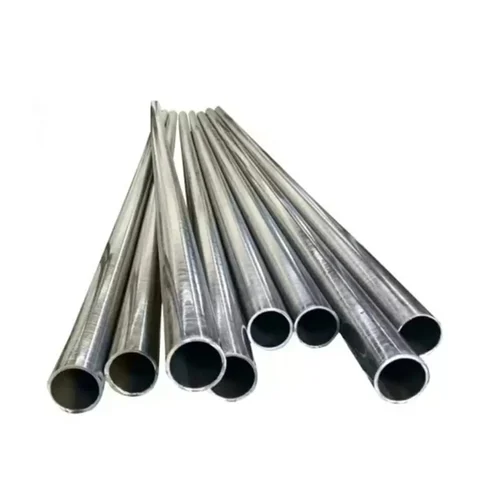Alloy 2304 Duplex Stainless Steel: A Cost-Effective Alternative with Balanced Strength and Corrosion Resistance
In today’s competitive industrial landscape, the demand for high-performance yet cost-efficient materials is increasing. One such material that meets these requirements is Alloy 2304 Duplex Steel. Known for its corrosion resistance, good mechanical properties, and affordability, Alloy 2304 is an excellent choice for various structural, marine, and process industry applications.
What is Alloy 2304 Duplex Stainless Steel?
Alloy 2304, designated as UNS S32304, is a lean duplex stainless steel with a dual-phase microstructure containing both austenitic and ferritic phases in roughly equal proportions. This combination imparts a unique set of properties: higher strength than standard austenitic grades and better stress corrosion resistance than ferritic grades, all at a lower cost due to its reduced nickel and molybdenum content.
It is often considered a cost-effective alternative to 304L and 316L stainless steels, especially in mildly corrosive environments.
Chemical Composition (Typical):
Chromium (Cr): 21.5–24.5%
Nickel (Ni): 3.0–5.5%
Molybdenum (Mo): ≤0.3%
Nitrogen (N): 0.05–0.2%
Manganese (Mn): ≤2.5%
Iron (Fe): Balance
This lean composition makes Alloy 2304 less expensive while still maintaining excellent mechanical and corrosion-resistant properties.
Key Properties of Alloy 2304
Higher Mechanical Strength
Alloy 2304 offers double the yield strength of traditional austenitic stainless steels like 304 and 316. This allows for thinner walls and lighter structures, reducing material costs without sacrificing durability.
Good Corrosion Resistance
While it does not match the resistance levels of higher-grade duplex steels like 2205 or
2507, Alloy 2304 performs very well in:
• Mild chloride environments
• Freshwater and urban atmospheres
• Certain acidic and alkaline conditions
Its pitting resistance equivalent number (PREN) is typically around 25–26, superior to
304L and comparable to 316L.
Weldability and Fabrication
Alloy 2304 can be welded using most standard techniques. However, precautions must be taken to avoid overheating and to maintain the balance between ferrite and austenite phases.
Thermal and Fatigue Performance
Lower thermal expansion compared to austenitic grades
Higher thermal conductivity
Excellent fatigue strength, making it suitable for cyclic loading conditions
Applications of Alloy 2304 Duplex Steel
Alloy 2304 is widely used in industries that require moderate corrosion resistance and strength, including:
• Structural Components: Bridges, building supports, and reinforcements
• Marine Applications: Boat fittings, coastal structures, and dock
equipment
• Pulp & Paper Industry: Digesters, liquor tanks, and processing vessels
• Chemical Industry: Storage tanks, pressure vessels, and pipelines for
low-aggression chemicals
• Water Treatment Plants: Filters, piping systems, and support frames
Advantages of Alloy 2304 Duplex Steel
• Cost Savings: Its lower nickel and molybdenum content make it more
affordable than many other stainless steel grades, especially in volatile metal
markets.
• Sustainability: Due to its long service life and recyclability.
• Alloy 2304 contributes to sustainable construction and engineering practices.
• Weight Reduction: High strength allows for lighter construction,
which reduces transport and installation costs.
• Reliability: Good resistance to general and localized corrosion
ensures longer maintenance cycles and reduced downtime.
Things to Consider
• Not recommended for high-chloride or highly acidic environments
• Welding requires control of heat input to avoid phase imbalance
• May not replace higher-end duplex steels like 2507 for extreme conditions
Conclusion
Alloy 2304 Duplex Stainless Steel offers an ideal blend of affordability, mechanical strength, and corrosion resistance, making it suitable for a wide range of applications. Whether you’re involved in structural design, marine equipment, or general fabrication, Alloy 2304 provides reliable performance with lower overall material costs.
For industries seeking to cut costs without compromising on quality and durability, Alloy 2304 is a smart, sustainable, and strong choice.


